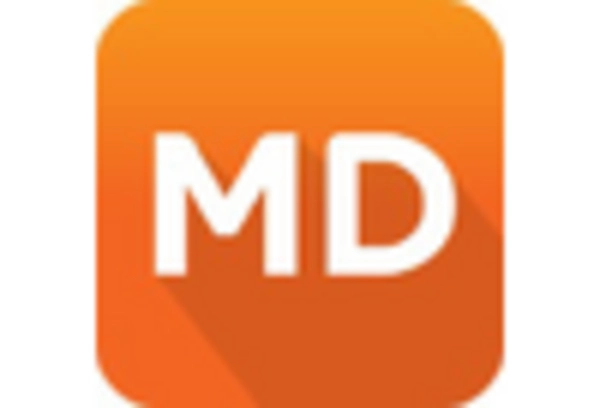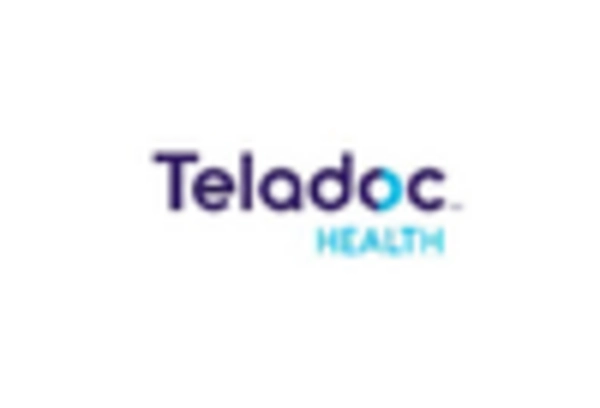Supportive Regulatory Environment
A supportive regulatory environment is emerging as a crucial driver for the telehealth market. Recent legislative changes have facilitated the expansion of telehealth services, allowing for broader reimbursement policies and increased provider participation. For instance, the Centers for Medicare & Medicaid Services (CMS) has expanded coverage for telehealth services, which has significantly boosted provider engagement. This regulatory support is essential for fostering innovation and encouraging healthcare providers to invest in telehealth technologies. As regulations continue to evolve, they are likely to create a more favorable landscape for the telehealth market, promoting growth and accessibility for patients across various demographics.
Increased Focus on Preventive Care
The telehealth market is witnessing an increased focus on preventive care, which is reshaping healthcare delivery. Healthcare providers are leveraging telehealth platforms to promote wellness and preventive services, such as routine check-ups and health screenings. This shift is driven by a growing recognition of the importance of early intervention in managing chronic diseases. Data suggests that telehealth can enhance patient engagement in preventive care, leading to better health outcomes. As healthcare systems prioritize preventive measures, the telehealth market is likely to expand, offering more services aimed at maintaining health rather than merely treating illness. This proactive approach could lead to a more sustainable healthcare model.
Growing Interest in Chronic Disease Management
The telehealth market is increasingly focused on chronic disease management, reflecting a significant shift in healthcare priorities. With the prevalence of chronic conditions such as diabetes and hypertension on the rise, telehealth services are being utilized to provide ongoing support and monitoring for patients. Remote monitoring tools and virtual consultations enable healthcare providers to track patient progress and adjust treatment plans in real-time. This approach not only improves patient outcomes but also reduces the burden on healthcare facilities. As the demand for effective chronic disease management solutions grows, the telehealth market is likely to expand, offering innovative services tailored to meet the needs of this patient population.
Rising Demand for Convenient Healthcare Solutions
The telehealth market is experiencing a notable surge in demand for convenient healthcare solutions. Patients increasingly prefer remote consultations due to their flexibility and accessibility. According to recent data, approximately 70% of patients express a desire for telehealth services, indicating a shift in consumer preferences. This trend is particularly pronounced among younger demographics, who are more comfortable with technology. The convenience of accessing healthcare from home or on-the-go is reshaping patient expectations. As a result, healthcare providers are adapting their services to meet this demand, leading to a more competitive landscape in the telehealth market. This shift not only enhances patient satisfaction but also encourages healthcare systems to innovate and expand their telehealth offerings.
Technological Advancements in Communication Tools
Technological advancements are playing a pivotal role in the evolution of the telehealth market. Innovations in communication tools, such as high-definition video conferencing and secure messaging platforms, are enhancing the quality of virtual consultations. These technologies facilitate real-time interactions between patients and healthcare providers, improving the overall experience. Furthermore, the integration of artificial intelligence and machine learning is streamlining administrative processes, allowing for more efficient patient management. As these technologies continue to evolve, they are likely to drive further growth in the telehealth market. The increasing reliability and functionality of these tools are expected to attract more healthcare professionals to adopt telehealth solutions, thereby expanding the market.

















Leave a Comment